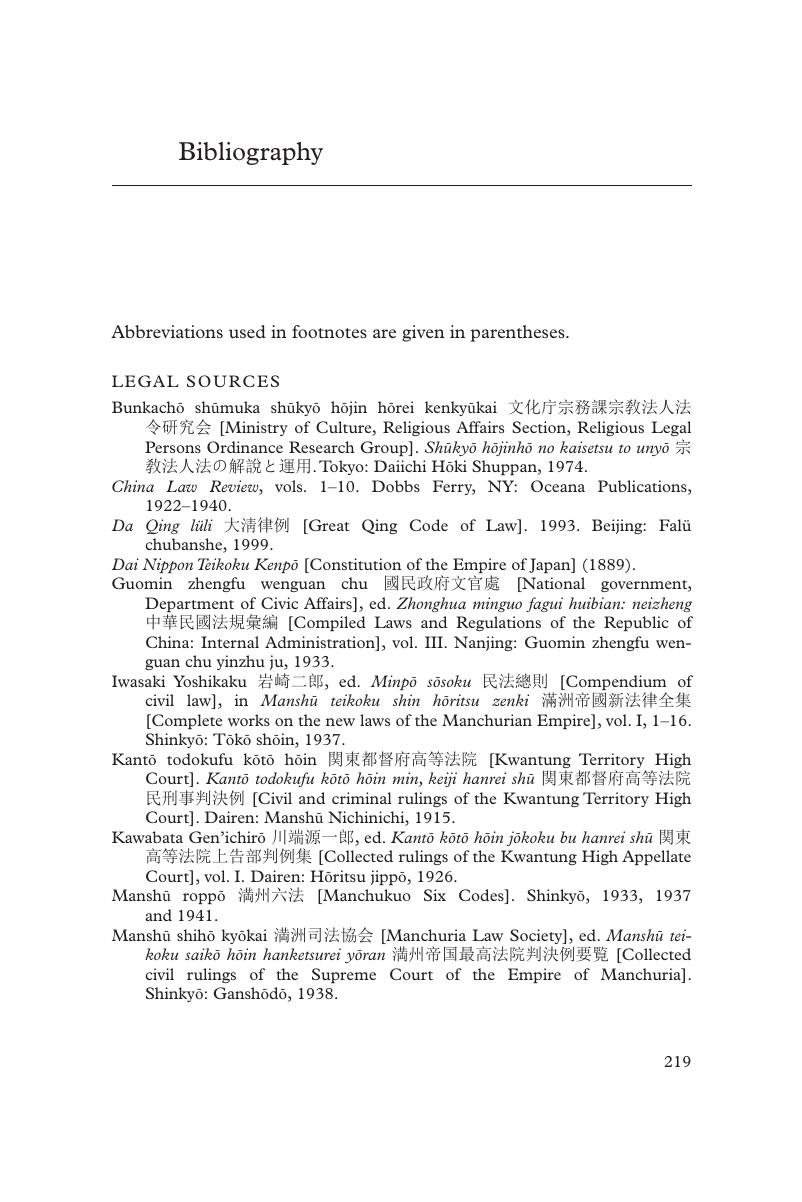Book contents
- Empire and the Meaning of Religion in Northeast Asia
- Empire and the Meaning of Religion in Northeast Asia
- Copyright page
- Contents
- Figures
- Maps
- Tables
- Acknowledgments
- Note on Romanization
- Introduction
- 1 Foundations of Religion in Society in Manchuria
- 2 From the Blood of the Martyrs
- 3 The Mind of Empire
- 4 Piety in Print
- 5 The Laws of Men
- 6 A Charitable View
- 7 Manchukuo’s Filial Sons
- 8 May God Bless Manchukuo
- Concluding Thoughts
- Appendix
- Bibliography
- Index
- References
Bibliography
Published online by Cambridge University Press: 02 February 2017
- Empire and the Meaning of Religion in Northeast Asia
- Empire and the Meaning of Religion in Northeast Asia
- Copyright page
- Contents
- Figures
- Maps
- Tables
- Acknowledgments
- Note on Romanization
- Introduction
- 1 Foundations of Religion in Society in Manchuria
- 2 From the Blood of the Martyrs
- 3 The Mind of Empire
- 4 Piety in Print
- 5 The Laws of Men
- 6 A Charitable View
- 7 Manchukuo’s Filial Sons
- 8 May God Bless Manchukuo
- Concluding Thoughts
- Appendix
- Bibliography
- Index
- References
Summary

- Type
- Chapter
- Information
- Empire and the Meaning of Religion in Northeast AsiaManchuria 1900–1945, pp. 219 - 241Publisher: Cambridge University PressPrint publication year: 2016



